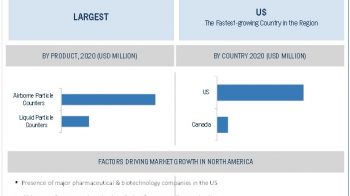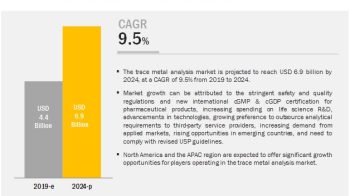Overview of This Study:
The study involved four major activities in estimating the current market size for the air quality monitoring systems market. Exhaustive secondary research was done to collect information on the market and its different subsegments.
The next step was to validate these findings, assumptions, and sizing with industry experts across the value chain through primary research. Both top-down and bottom-up approaches were employed to estimate the complete market size. After that, market breakdown and data triangulation procedures were used to estimate the market size of segments and subsegments.
Expected Revenue:
The global air quality monitoring system market (AQMS) is expected to reach USD 6.0 billion by 2025 from USD 4.3 billion in 2019, at a CAGR of 5.6%. The major factors driving the growth of the air quality monitoring system market include the supportive government regulations for effective air pollution monitoring and control, ongoing initiatives towards the development of environment-friendly industries, increasing public-private funding for effective air pollution monitoring, rising levels of air pollution, and increasing public awareness related to the environmental and healthcare implications of air pollution.
Download PDF Brochure@
https://www.marketsandmarkets.com/pdfdownloadNew.asp?id=183784537
Data Triangulation:
After arriving at the overall market size-using the market size estimation processes as explained above-the market was split into several segments and subsegments. To complete the overall market engineering process and arrive at the exact statistics of each market segment and subsegment, data triangulation, and market breakdown procedures were employed, wherever applicable. The data was triangulated by studying various factors and trends from both the demand and supply sides in the air quality monitoring systems market.
Key Players:
The major players operating in the AQMS market include Thermo Fisher Scientific (US), Emerson Electric (US), General Electric (US), Siemens AG (Germany), Teledyne Technologies (US), PerkinElmer, Inc. (US), Agilent Technologies, Inc. (US), Spectris plc (UK), 3M Company (US), Honeywell International Inc (US), HORIBA, Ltd. (Japan), Merck KGaA (Germany), TSI Incorporated (US), Tisch Environmental (US), and Testo (Germany), among others.
Different Growth Strategies Adopted:
Analysis of the market developments between 2016 and 2019 revealed that several growth strategies such as product launches, enhancements, strategic acquisitions, agreements, partnerships, collaborations, and expansions were adopted by the market players to strengthen their product portfolios and maintain a competitive position in the air quality monitoring systems market. Among these business strategies, product launches, agreements, and partnerships were the most widely adopted growth strategies by the players in the air quality monitoring systems market.
Thermo Fisher Scientific (US) held the leading position in the global air quality monitoring system market. The company possesses a robust AQM portfolio that includes products for ambient gas monitoring, emission monitoring, and particulate monitoring. The company has a strong geographic presence across North America, Europe, APAC, and Africa.
The company primarily focuses on new product launches and product enhancements as its key growth strategy to sustain its leadership position in the air quality monitoring system market. With regard to this strategy, the company has launched several AQM products in the last three years, such as TriPlus 500 Gas Chromatography Headspace Autosampler (March 2019) and the IQ Series gas analyzers to its iQ Series environmental monitoring platform (August 2017). The company’s strong geographic presence in more than 75 countries and rising research initiatives for novel product launches are among the key reasons for the leadership position of this company in the AQM system market.
Request Sample Pages@
https://www.marketsandmarkets.com/requestsampleNew.asp?id=183784537
Siemens (Germany) held the second position in the air quality monitoring system market in 2018. The company has a strong AQM product portfolio, a well-established distribution network, and a wide geographic presence across the globe. The company mainly focuses on product launches and partnerships as its key growth strategy to strengthen its position in the global air quality monitoring system market. To increase its market visibility, the company launched the City Air Management (CyAM) software at the World Cities Summit in Singapore in 2018. Its strong R&D capabilities, high industry presence, strong brand recognition, and rising market visibility the company’s share in the AQM market is expected to increase during the forecast.
North America to dominate the AQMS market during the forecast period
Geographically, the AQMS market is segmented into North America, Europe, Asia Pacific, and the Rest of the World. North America held the largest share of the market in 2019. Factors such as easy accessibility and fast adoption of advanced technologies among key stakeholders and the presence of stringent government regulations for effective pollution monitoring and control are contributing to the large share of the North American region.

